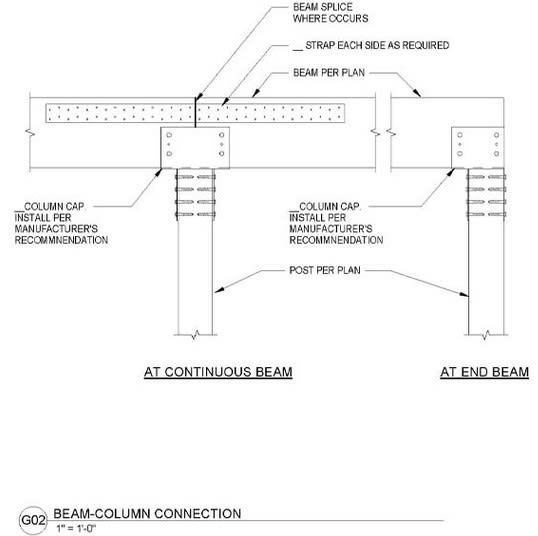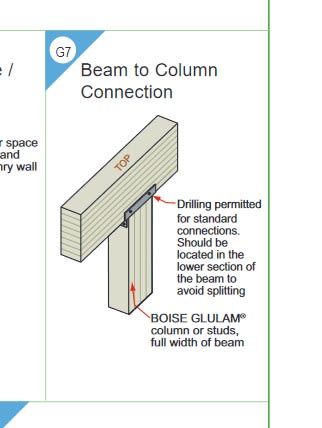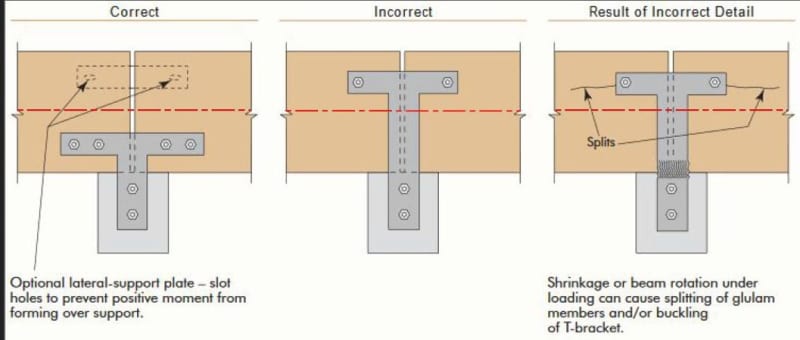Hi everyone, I was perusing Woodwork's library of details on their site and came across this one shown below. I'm considering the wisdom of the strap they show on the side of the beam. If the beam is spliced over the column then as the beams attempt to rotate won't the strap be in tension and cause splitting in the beam? My assumption is that the strap is there to provide a lateral connection from one beam to the other, but if a post-cap is installed as shown then is the strap needed? Or are the straps to prevent out-of-plane rotations between beams?
In any case, I've seen a similar detail where the strap is placed over the top of the beams instead of on the side, which seems better as far as the splitting issue is concerned. Woodworks is kind of the authority on wood construction so I hate to question their detail...

In any case, I've seen a similar detail where the strap is placed over the top of the beams instead of on the side, which seems better as far as the splitting issue is concerned. Woodworks is kind of the authority on wood construction so I hate to question their detail...



